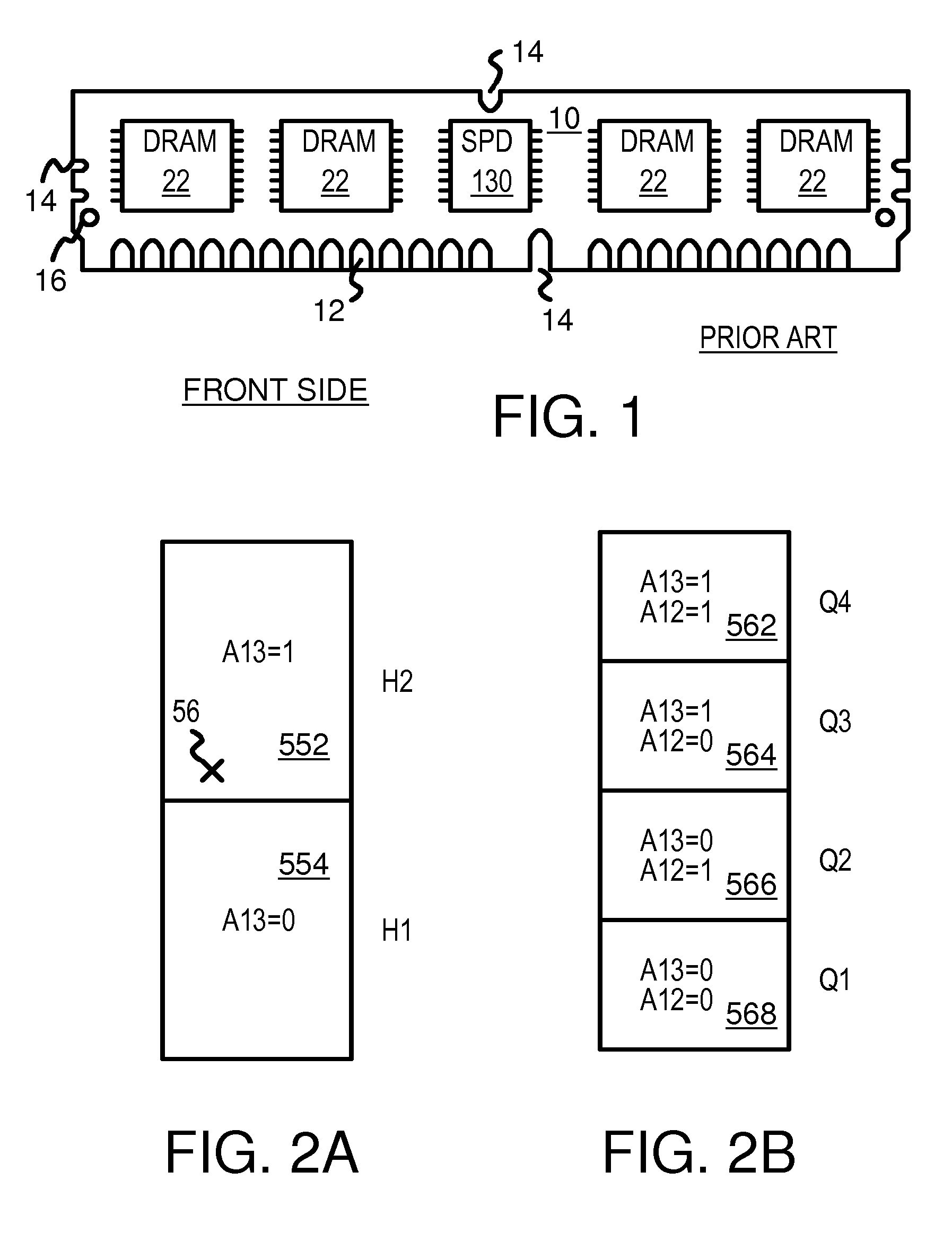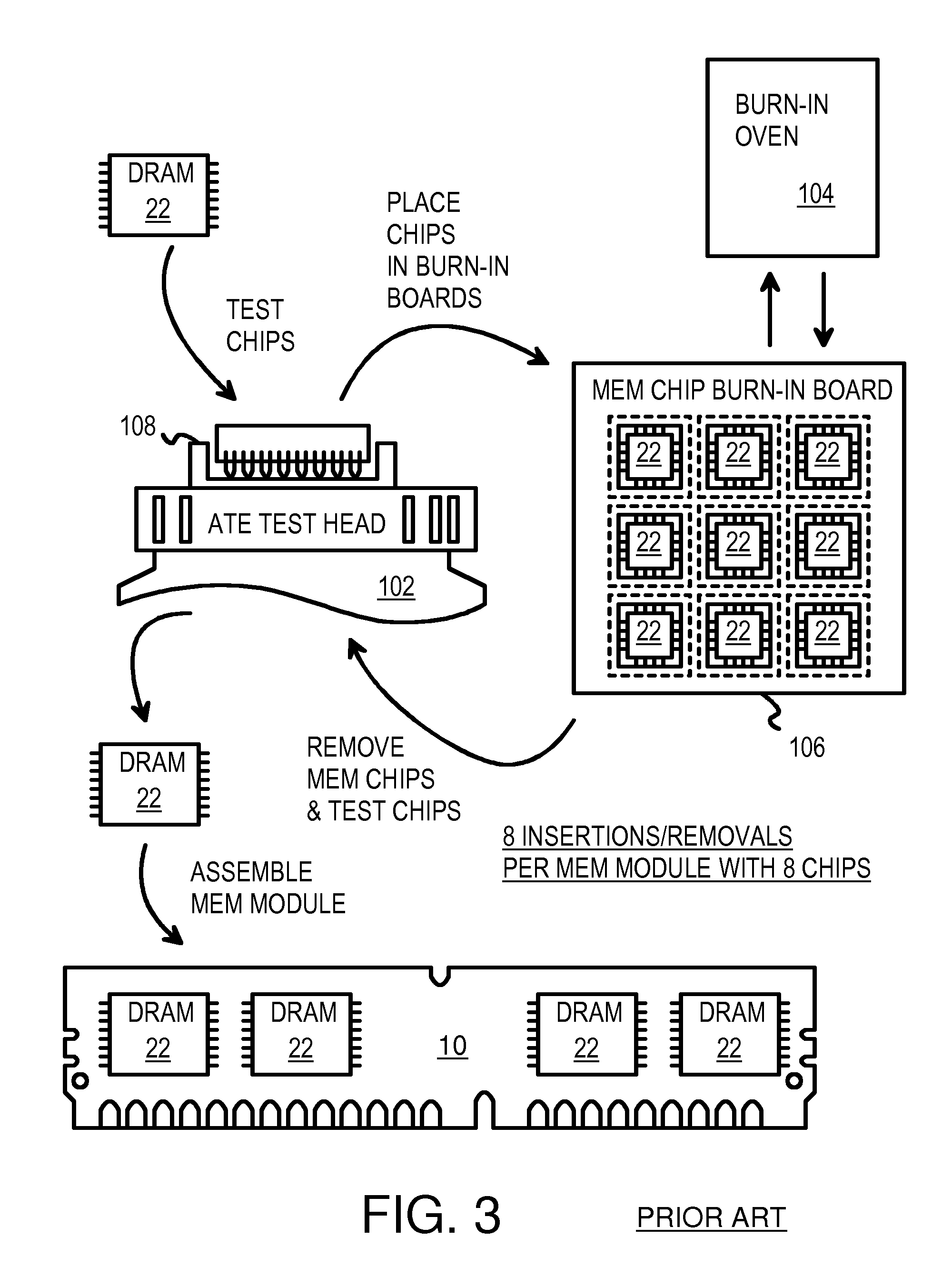Manufacturing method for partially-good memory modules with defect table in EEPROM
a technology of memory modules and defect tables, applied in the field of memory module manufacturing, can solve the problems of noisy test environment, wafer-sort test may not catch all defects, and manufacturing defects to be somewhat common
- Summary
- Abstract
- Description
- Claims
- Application Information
AI Technical Summary
Benefits of technology
Problems solved by technology
Method used
Image
Examples
Embodiment Construction
[0037]The present invention relates to an improvement in memory module manufacturing. The following description is presented to enable one of ordinary skill in the art to make and use the invention as provided in the context of a particular application and its requirements. Various modifications to the preferred embodiment will be apparent to those with skill in the art, and the general principles defined herein may be applied to other embodiments. Therefore, the present invention is not intended to be limited to the particular embodiments shown and described, but is to be accorded the widest scope consistent with the principles and novel features herein disclosed.
[0038]FIG. 4 highlights a test flow that burns in assembled memory modules rather than individual partially-good DRAM chips. Wafers of good and partially-good DRAM die are packaged into packages such as ball-grid-array (BGA) or thin-small-outline packages (TSOP) and delivered to the memory module manufacturer. The packaged...
PUM
 Login to View More
Login to View More Abstract
Description
Claims
Application Information
 Login to View More
Login to View More - R&D
- Intellectual Property
- Life Sciences
- Materials
- Tech Scout
- Unparalleled Data Quality
- Higher Quality Content
- 60% Fewer Hallucinations
Browse by: Latest US Patents, China's latest patents, Technical Efficacy Thesaurus, Application Domain, Technology Topic, Popular Technical Reports.
© 2025 PatSnap. All rights reserved.Legal|Privacy policy|Modern Slavery Act Transparency Statement|Sitemap|About US| Contact US: help@patsnap.com



